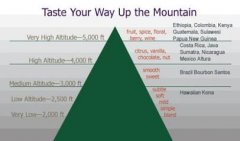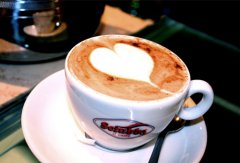What is individual coffee? What kind of coffee do you mean?

In the process of coffee brewing, if a single kind of coffee bean is used, then the coffee produced by the brew is called "single coffee".
However, because some coffee varieties have obvious deficiencies in taste and style, for example, if they are used alone to make coffee, they will have obvious deficiencies in taste, so people favor other varieties of coffee to make up for their defects. It is common to use a mixture of two or more coffees (such as the famous Mamba Coffee-Mantz + Brazilian Santos), and this combination of two or more different coffees is called "mixed coffee".
PS: in fact, some Blue Mountain Coffee on the market is actually the product of mixed coffee, mixed with some Blue Mountain Coffee or beans similar to Blue Mountain Coffee to make a "mixed Coffee" similar to Blue Mountain coffee.
two。 The method of making hand-made dripping coffee
Hand-made drip coffee, also known as hand-brewed coffee (Mellita), Mellita is a well-known and simple brewing method invented by Mrs. Mellita in West Germany (1873-1950).
Now, with the popularity of drip coffee in the coffee industry in Japan, "coffee paths" have also been developed in Japan. They believe that hand-brewed coffee is not a simple way of brewing. It requires baristas to practice and accumulate experience in order to make a good brewing method of coffee.
3. Tools for the use of hand-made drip coffee
Filter cup
Until today, many styles and materials have been developed for filter cups. The most commonly used filter cups are resin 3-hole filter cups (traditional 2-hole filter cups, traditional 1-hole filter cups and improved 1-hole filter cups), and the materials of filter cups are not limited to resin materials. Ceramic filter cup and copper filter cup are gradually moving towards the mainstream.
The author of the filter cup believes that the thermal conductivity of different materials and the improved wall groove texture can greatly affect the final quality of coffee. But it depends on which material and which shape of the filter cup is the best.
Filter pot
The filter pot is a tool for connecting the filter cup. The selection of the filter pot is made of transparent glass and can withstand hot and cold shrinkage. Of course, the detailed scale mark on the filter pot is also a good helper for baristas to extract accurately.
Filter paper
Different types of filter cups have corresponding filter paper. generally speaking, filter paper is divided into drifting filter paper and non-drifting filter paper. because of the texture of the paper, non-drifting filter paper is often a little more expensive than drifting filter paper, and for health. Because the bleached filter paper in addition to a certain odor (in brewing will affect the taste of coffee) the chemical composition of the fluorescent agent used is also extremely harmful to human health. Therefore, considering the above reasons, it is recommended to choose non-drifting filter paper.
Thin-mouth kettle
A thin-mouth pot is a key to making a good cup of coffee. When choosing a small-mouth pot, it is generally appropriate to choose a slightly larger one, which is more conducive to maintaining the stability of the water temperature. In addition, it is also a key point in the selection of the spout. When choosing, you need to choose a mouth shape that is easier to control the flow to ensure a smooth brewing process.
Thermometer
The thermometer is a necessary tool for drip brewing coffee, because the roasting degree of all kinds of coffee beans is different, so the water temperature that stimulates the characteristics of beans will be slightly different, so the role of thermometers here is self-evident.
Important Notice :
前街咖啡 FrontStreet Coffee has moved to new addredd:
FrontStreet Coffee Address: 315,Donghua East Road,GuangZhou
Tel:020 38364473
- Prev

Talk about the influence of altitude on the flavor of coffee
The influence of geographical location on the flavor of coffee beans is profound. All coffee grows in the tropics, and the altitude at which it grows has a profound effect on the taste of coffee. The tropical belt extends from 30 degrees north latitude to the equatorial regions of the southern mountains that produce the world's truly high-quality Arabica coffee. Central and South America, South Asia and some Pacific islands, and south-central Africa are also the most important in the world.
- Next

What is the basic knowledge of Italian Coffee
Espresso is basically a male drink, energetic and unpretentious, and an enhanced version of kung fu coffee for real coffee ghosts. Double does not mean doubling the amount of coffee, but the same amount of water, double the amount of coffee powder, coffee still looks like that, but the concentration has doubled. The level is equivalent to that in spirits and perfumes.
Related
- Beginners will see the "Coffee pull flower" guide!
- What is the difference between ice blog purified milk and ordinary milk coffee?
- Why is the Philippines the largest producer of crops in Liberia?
- For coffee extraction, should the fine powder be retained?
- How does extracted espresso fill pressed powder? How much strength does it take to press the powder?
- How to make jasmine cold extract coffee? Is the jasmine + latte good?
- Will this little toy really make the coffee taste better? How does Lily Drip affect coffee extraction?
- Will the action of slapping the filter cup also affect coffee extraction?
- What's the difference between powder-to-water ratio and powder-to-liquid ratio?
- What is the Ethiopian local species? What does it have to do with Heirloom native species?

